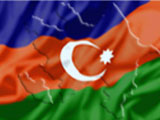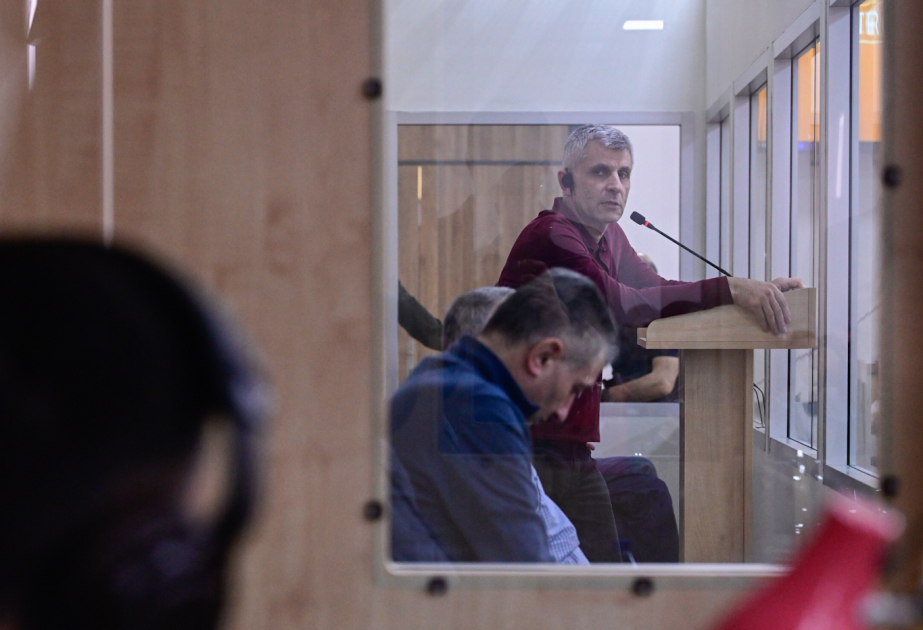|
|
TODAY.AZ / Politics
Garakent tragedy turns 17
20 November 2008 [13:12] - TODAY.AZ
This happened 17 years ago. There was not an official information, but mourning melody was sounded on TV, which was a sign of alert...
 Later there appeared a list: Osman Mirzoyev, Ismen Gaibov, Mohammed Asadov, Tofik Ismaylov, Vagif Cafarov, Veli Mamedov, Aly Mustafayev...
Later there appeared a list: Osman Mirzoyev, Ismen Gaibov, Mohammed Asadov, Tofik Ismaylov, Vagif Cafarov, Veli Mamedov, Aly Mustafayev...This is a list of passengers of the air force helicopter Mi-8, knocked down by a heat-seeking missile near Garakent village on November 20 of 1991. Those, who will later be called "the prominent state figures of Azerbaijan" and those, to whom we bound the hopes for success in the just launched Karabakh war on November 19 and for the collapse of information blockade...
First, there appeared an official version: the helicopter crashed into a rock in the fog. The fact that he was knocked down was admitted several days later. It took us several years to eliminate all doubts and state that the missile, which knocked down Mi-8, was launched from Armenian positions. But there are too many "white spots" in the history of the last flight of Mi-8. It is still unclear why the helicopter with the state secretary, minister of internal affairs, general prosecutor, press secretary of the president and many others on board was not accompanied by "a fire support helicopter" and why all of them were in the same helicopter - it contradicts to all possible rules of security.
It is unclear how Armenian militants managed to get information about the exact route of flight, which only representatives of the command of Soviet troops had in Karabakh! It is unclear where they got a specialist, who can treat heat-seeking missiles. The source of the missile is also unclear - at that time the most popular weapon in Karabakh were hail guns and Alazan missiles. And it is far more unclear how could a tape in the black boxes of the Mi-8 helicopter burn off. The most possible explanation: a specialist arrived on the spot before the inspectors and power representatives and got rid the tape.
Understanding came later. Autumn of 1991 was a "time of great hopes" in the post-Soviet area. After August most people were confident that know everything will improve, while the bitter heritage of the former USSR will sank in oblivion. At that time, on the wave of post-August euphoria, there appeared a "Zheleznovodsk initiative" on reconciliation in the Karabakh - the same, according to which a cultural autonomy would be granted to Karabakh within Azerbaijan. A peacekeeping mission of Russia and Kazakhstan was launched in Karabakh and most people consider that it has more chances for execution than many further peaceful initiatives. This was not profitable either for apologists of the Armenian expansionism and those, who again attempted to "tie" Azerbaijan and Armenia to Moscow by using Karabakh and those, who attempted to earn on arms trade... At that time, it was necessary to frustrate the "Zheleznovodsk initiative" and the conflict resolution...
Yes, this is true. But there was another thing in this case, the very law of terrorism: when the target and the victims become prominent figures. Those, whose death will be painful for all. And those, whose "termination" will have a real impact on the development of events. It so happened, either deliberately or not, that they were on the board of the helicopter, which did not land on November 20 of 1991.
No one will ever learn how would events in Karabakh develop, if the missile did not reach the target. And the most tragic is that nothing could be different, as we could not imagine whom we were having a war with, being confident that we face not professional terrorists, trained in Lebanon and Syria, but local Karabakh Armenians, who listen to the nonsense of Balayan and people, similar to him. We believed in the guarantees, received from Russian "militants" without analyzing the interests of Moscow in Karabakh or its historical priorities. And the most terrible thing is that we seem not to understand it even now.
May them all rest in peace!
NURANI - Ekho newspaper archive
URL: http://www.today.az/news/politics/49123.html
 Print version
Print version
Views: 3186
Connect with us. Get latest news and updates.
See Also
- 05 April 2025 [17:10]
Azerbaijani Defense Minister holds high-level military service meeting - 05 April 2025 [16:35]
Azerbaijan, Pakistan brainstorm interparliamentary relations - 05 April 2025 [16:20]
President of Uzbekistan makes phone call to President Ilham Aliyev - 05 April 2025 [13:25]
Euronews highlights Azerbaijan’s landmine challenges in special report - 05 April 2025 [12:47]
Relocation to Suqovushan village begins: 53 families to move - 05 April 2025 [10:00]
Briefing dedicated to humanitarian mine action in Azerbaijan held at UN - 04 April 2025 [14:34]
Azerbaijan, Russia mark 33rd anniversary of diplomatic ties with renewed commitment to alliance - 04 April 2025 [13:21]
Landmine toll reaches 388 in post-war Azerbaijan - 04 April 2025 [12:58]
Trial of Armenian-origin individuals accused of war crimes continues in Baku - 04 April 2025 [11:59]
Azerbaijan slams Armenia over unreliable landmine maps, urges international action
Most Popular
 Turkiye to introduce parental consent for social media users under age of 16
Turkiye to introduce parental consent for social media users under age of 16
 UK, Poland and Northern Europe want to create joint defense fund
UK, Poland and Northern Europe want to create joint defense fund
 How Donald Trump’s tariff impacts Azerbaijan’s trade with US [COMMENTARY]
How Donald Trump’s tariff impacts Azerbaijan’s trade with US [COMMENTARY]
 They are trying to sell the tale of "Saint Rubik" to Trump
They are trying to sell the tale of "Saint Rubik" to Trump
 Underperformer strikes back
Underperformer strikes back
 Azerbaijan, Russia mark 33rd anniversary of diplomatic ties with renewed commitment to alliance
Azerbaijan, Russia mark 33rd anniversary of diplomatic ties with renewed commitment to alliance
 Armenian defendant admits role in war crimes during Baku Military Court trial
Armenian defendant admits role in war crimes during Baku Military Court trial
